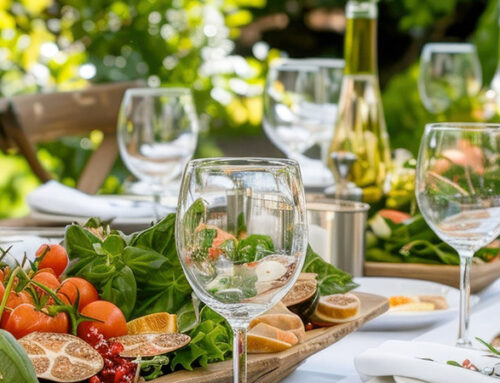Moving can be stressful for all living beings. When it comes to change, plants are especially vulnerable. However, with a little love and some planning you can protect your plants and help them adjust to their new environment.
Whether you are worried about your small succulent collection or you are a certified plant parent, be assured these tips from Tim Moore, lead editor of Backyard Boss, will help keep your plants safe and secure throughout the moving process.
Spoiler alert! Before you get our hands dirty, it’s important to keep in mind that due to government regulations moving companies are not allowed to move plants across state lines. If you’re moving long distance, or across state lines, or you’re planning an intrastate move (a distance of over 100 miles within the same state), it would be kinder to your plants to transport them yourself. You will be able to give them the water and light they need while they are on the road. The following tips are for caring for your plants while moving locally.
Protect your plants before the move
– Water your plants the day before they will be transported. Keeping the soil hydrated will keep the roots loose and reduce any shocks during transport.
– Wrap your plants in a cone shaped form to keep all its leaves and soil from falling out or breaking. This step is especially important for orchids or fragile plants that need their space.
– Measure your plants and find the right kind of moving box to prepare for transport.
– If your potted plants are small: fit various pots into a book box, leaving the lid open and filling the spaces in between the pots with packing paper or eco-bubble. Ideally, the box would be tall enough to protect the stems, branches or leaves while leaving enough clearance for the plants to breath.
– If you have a hanging plant, carefully gather its tendrils and use packing paper to wrap around the base of the pot to provide ample cushion.
– Larger leafy plants are more easily transported in individual moving boxes.
– To learn more about moving box sizes, consult this chart and find the perfect box for each of your plants.
– Make sure your movers are aware of which moving boxes are full of plants. Keep your moving boxes full of plants labeled and open for easy identification. Make sure these boxes are not stacked. Experienced movers will find the safest spot on the moving truck that will have minimal shifting and danger of being crushed by other items.
– If you are transplanting plants from your garden, have portable planters ready to go with fertilized soil and a hole for the roots. Water the soil of the new planter thoroughly and allow the soil to turn into mud. This will allow the roots to sink into the new soil and help absorb the shock of the transplant. Allow time for the water to drip through before placing them in moving boxes as water leakage can reduce the integrity of a moving box. Also, consider that perennials or annual plants are more likely to thrive if they are transplanted during the cooler weather months or spring than in the heat of summer.
– Any flowering perennial should be transplanted after their flowering cycle. If they are moved too roughly, buds can be disturbed and fall off before blooming.
Keep your plants thriving in their new home
– Create a floor plan of your new home that allows you to analyze the exposure to sunlight, wind and warmth. Plan out the location of each plant in your new home according to the conditions it had in your previous home. For example, if your fiddle fig leaf tree was healthy and thriving where it got morning sun but not direct sunlight, find a similar spot in your new home to ensure it will adapt to its new surroundings.
– While there are many urgent things to figure out after a move, unpacking your plants should be at the top of your list. Your leafy green friends need their space to breath and grow, leaving them in the moving boxes for an extended period could cause them to get sick or die.
– Once you are moved in, try to reduce the shock by not moving your plants too much around your new house. Most likely, you will rearrange furniture and decor until it feels right, but keep in mind, plants need stability so try and restrict the number of times you move them around your home.
– If some of your plants regrettably did not survive the journey, you can try to propagate a new one from a cutting or a part of a branch.
Moving your plants is a definite way to make your new place feel like home.
Looking to buy or sell in the Nevada County area? Give a Coldwell Banker agent a call today!





